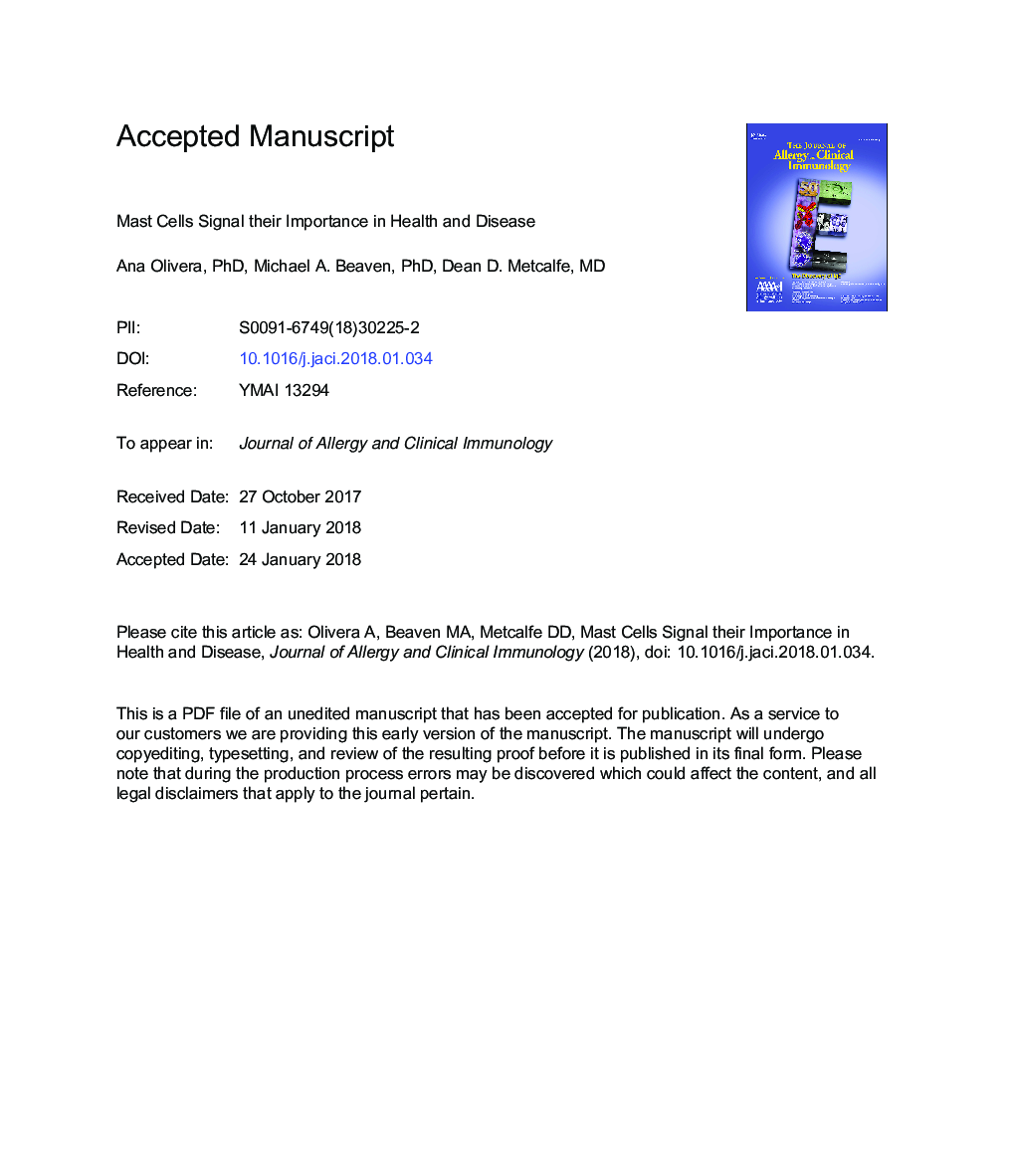| Article ID | Journal | Published Year | Pages | File Type |
|---|---|---|---|---|
| 8712901 | Journal of Allergy and Clinical Immunology | 2018 | 46 Pages |
Abstract
FcεRI is the primary receptor in mast cells that mediates allergic reactions by inducing rapid release of mediators, an adaptive immune response that might have evolved as a host defense against parasites and venoms. Yet it is apparent that mast cells are also activated through non-IgE receptors, the significance of which is just beginning to be understood. This includes the Mas-related G protein-coupled receptor X2, which might contribute to reactions to diverse antimicrobials and polybasic compounds, and the adhesion G protein-coupled receptor E2, variants of which are associated with familial vibratory urticaria and are activated by mechanical vibration. Similarly, mast cells have long been recognized as the main repository for histamine, heparin, and proteases. Recent evidence also points to new functions, modes of delivery, and mechanisms of action of mast cell proteases that add new dimensions to the roles of mast cells in human biology. In addition, exposure of mast cells to environmental cues can quantitatively and qualitatively modulate their responses and thus their effect on allergic inflammation. Illustrating this paradigm, we summarize a number of recent studies implicating the injury/tissue damage cytokine IL-33 as a modulator of allergen-induced mast cell responses. We also discuss the discovery of markers associated with transformed mast cells and new potential directions in suppressing mast cell activity.
Keywords
GPCRMCTCCPA3TregIL-33mastocytosisSCF7TMTLRCTMCMCTST2LMRGPRX2PD-L1MMCPD-1STAT3G protein–coupled receptorsST2AllergyTryptaseToll-like receptorConnective tissue mast cellMucosal mast cellStem Cell FactorDegranulationprogrammed cell death ligand 1Mast cellssignal transducer and activator of transcription 3Regulatory T seven transmembraneprogrammed cell death protein 1
Related Topics
Life Sciences
Immunology and Microbiology
Immunology
Authors
Ana PhD, Michael A. PhD, Dean D. MD,
